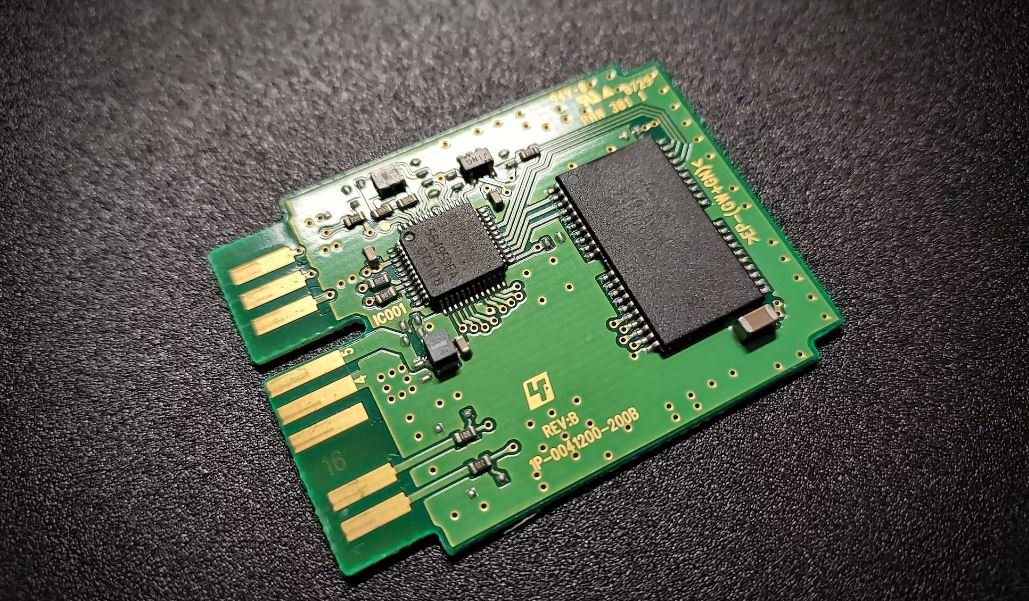OpenAI vs HuggingFace
As the field of natural language processing (NLP) continues to advance, two major players have emerged: OpenAI and HuggingFace. Both companies provide powerful tools and models that help developers create innovative NLP applications. In this article, we will compare and explore the offerings of OpenAI and HuggingFace, highlighting their key features, strengths, and differences.
Key Takeaways:
- OpenAI and HuggingFace are leaders in the NLP space.
- Both companies offer models and tools for developers to build NLP applications.
- OpenAI’s GPT, particularly GPT-3, is known for its impressive language generation capabilities.
- HuggingFace’s Transformers library provides a comprehensive set of NLP models that are widely used.
- OpenAI’s models are typically more computationally expensive compared to HuggingFace’s models.
- HuggingFace has a stronger emphasis on community-driven development and open-source collaboration.
OpenAI’s GPT Models
OpenAI is renowned for its Generative Pre-trained Transformer (GPT) models, with GPT-3 being the most famous iteration of the series. These models utilize deep learning techniques to excel at a wide range of NLP tasks, including text generation, translation, and sentiment analysis. GPT-3’s ability to produce coherent and context-aware text is truly remarkable.
HuggingFace’s Transformers Library
HuggingFace’s Transformers library is a comprehensive toolkit that offers a diverse range of NLP models, including GPT, BERT, and XLNet. Developers can easily integrate these models into their applications to achieve tasks such as text classification, named entity recognition, and text summarization. The versatility and extensibility of the Transformers library make it a go-to choice for many NLP practitioners.
Model Comparison
In terms of model performance and capabilities, GPT-3 stands out with its unparalleled language generation capabilities. It can generate coherent and contextually relevant responses, making it suitable for chatbots and conversational agents.
In contrast, HuggingFace’s models like BERT and XLNet are known for their strong performance in tasks such as sentiment analysis, text classification, and question answering.
| Model | Usage | Applications |
|---|---|---|
| GPT-3 | Language generation | Chatbots, conversational agents |
| BERT | Text classification, sentiment analysis | Sentiment analysis, named entity recognition |
| XLNet | Question answering | Question answering, language inference |
Computational Requirements
One notable difference between OpenAI and HuggingFace is the computational requirements of their models. OpenAI’s models, particularly GPT-3, are computationally expensive and require significant resources to run efficiently. This limitation can make them more challenging to use for certain applications. On the other hand, HuggingFace’s models are generally more scalable and can be run on less powerful hardware without sacrificing performance. This advantage makes HuggingFace models more accessible for developers with limited resources.
Openness and Collaboration
HuggingFace stands out in its emphasis on community-driven development and open-source collaboration. The Transformers library has a large user community that actively contributes to its development and improvement. This collaborative nature also fosters the creation of pre-trained models specifically tailored for various languages and domains.
**Interesting fact:** OpenAI initially released GPT-2 without the full model due to concerns about the system’s potential misuse for generating misleading or harmful content.
Conclusion
OpenAI and HuggingFace are prominent figures in the NLP landscape, offering developers powerful tools and models to build innovative NLP applications. OpenAI’s GPT models excel in language generation, while HuggingFace’s Transformers library provides a comprehensive set of models and a strong emphasis on community-driven development. Ultimately, the choice between OpenAI and HuggingFace depends on the specific requirements of your NLP project and your available resources.

Common Misconceptions
OpenAI
One common misconception about OpenAI is that it is a single entity responsible for all the advancements in artificial intelligence. However, OpenAI is actually a research organization that develops AI technologies and tools, but it is not the sole creator of AI.
- OpenAI collaborates with other organizations and researchers worldwide to contribute to the field of AI
- OpenAI’s primary focus is on developing safe and beneficial AI that can be used for various applications
- OpenAI’s work is often open source, allowing others to build upon their research and contribute to the development of AI
HuggingFace
Another common misconception is that HuggingFace is just a library or software tool for natural language processing (NLP) tasks. While HuggingFace does provide a highly popular NLP library, it is also a community-driven platform that offers various AI-related resources and promotes research collaboration.
- HuggingFace actively engages with the AI community, hosting events and competitions to encourage knowledge sharing and innovation
- HuggingFace provides a hub for researchers and developers to share pre-trained AI models that can be used for a wide range of applications
- HuggingFace’s library, Transformers, is renowned for its extensive collection of state-of-the-art models and tools for NLP tasks
OpenAI Vs. HuggingFace
Some people mistakenly think that OpenAI and HuggingFace are competitors in the field of AI. In reality, OpenAI and HuggingFace have different focuses and collaborate to complement each other in advancing AI technologies.
- OpenAI primarily focuses on research and development of AI technologies, ensuring their safety and beneficial impact
- HuggingFace provides a platform for sharing AI models and resources, making them more accessible for developers and researchers
- OpenAI and HuggingFace have collaborated on various projects, such as the GPT-3 language model, leveraging each other’s expertise for mutual benefit
Perfection and Bias
One misconception is that AI models developed by OpenAI or available through HuggingFace are infallible or completely bias-free. While AI models have made significant progress, there are still limitations and concerns around bias in AI algorithms.
- All AI models, including those from OpenAI and HuggingFace, can have biases due to biased training data or algorithmic design
- OpenAI and HuggingFace are actively working on understanding and mitigating biases in AI models through research and community efforts
- It is important for developers and users to be aware of potential biases and take necessary steps to address them when using AI models from either OpenAI or HuggingFace
Availability and Affordability
Lastly, some people might assume that the advanced AI models developed by OpenAI or accessible via HuggingFace are unaffordable or inaccessible. However, efforts have been made to make AI technology more widely available and affordable.
- OpenAI offers APIs and commercial licensing options to make their AI models accessible to businesses and developers
- HuggingFace provides open-source models and tools that can be used by anyone, regardless of their financial resources
- The availability of cloud computing platforms and the development of custom hardware have made using AI models more affordable and accessible

The Rise of OpenAI
OpenAI is a leading artificial intelligence research laboratory that focuses on the development of advanced AI models and technologies. In recent years, OpenAI has made significant advancements in natural language processing, computer vision, and reinforcement learning. Their innovations have revolutionized various industries, including healthcare, finance, and autonomous systems. The following table provides an overview of some of OpenAI’s remarkable achievements.
HuggingFace and its Contributions
HuggingFace is an AI startup that specializes in natural language processing and is widely recognized for its transformative models and tools. Their open-source library, Transformer, has become a cornerstone in NLP applications and is utilized by researchers and developers worldwide. The table below highlights some of the notable contributions made by HuggingFace in the NLP landscape.
OpenAI’s Language Models
OpenAI has developed cutting-edge language models that are renowned for their impressive capabilities. The table below compares three of OpenAI’s prominent language models—GPT-3, GPT-2, and Codex. These models have significantly advanced the field of natural language processing and are extensively utilized in various domains.
HuggingFace’s Transformer Models
HuggingFace’s Transformer models have played a pivotal role in advancing natural language understanding and text generation. The table below showcases three remarkable Transformer models—BERT, GPT, and RoBERTa—developed by HuggingFace. These models have become vital tools for a wide range of NLP tasks, including sentiment analysis, text classification, and machine translation.
OpenAI’s Research Publications
OpenAI has produced a plethora of research publications that profoundly impact the AI community. The table below presents a selection of highly influential papers published by OpenAI, spanning various topics such as reinforcement learning, unsupervised learning, and transfer learning.
HuggingFace’s Model Zoo
HuggingFace’s Model Zoo is an extensive collection of pre-trained models that serves as a valuable resource for researchers and developers. The table below illustrates a few notable models available in the Model Zoo, including GPT, RoBERTa, and T5. These models have significantly contributed to the advancements in natural language understanding and generation.
OpenAI’s Partnership and Collaboration
OpenAI believes in the power of collaboration and has established partnerships with numerous organizations and institutions. The table below showcases some of OpenAI’s notable collaborations, highlighting the diverse industries they work with and the joint projects they undertake.
HuggingFace’s Contribution to the Research Community
HuggingFace actively contributes to the AI research community through various initiatives. The table below outlines some of HuggingFace’s significant contributions, including hosting conferences, organizing competitions, and maintaining valuable community resources that facilitate knowledge sharing and collaboration.
OpenAI’s Funding and Investments
OpenAI has secured substantial funding from various sources, enabling them to pursue ambitious research goals and develop advanced AI technologies. The table below provides an overview of some significant funding rounds and investments received by OpenAI, showcasing the support they have garnered from renowned venture capital firms and technology giants.
Comparison of OpenAI and HuggingFace
OpenAI and HuggingFace, both industry leaders in AI, have contributed immensely to the development of advanced models and technologies. The table below presents a high-level comparison between the two organizations in terms of their offerings, notable achievements, key collaborations, and funding. Although OpenAI and HuggingFace differ in their approaches, they have collectively elevated the AI landscape and shaped the future of natural language processing and understanding.
Conclusion
OpenAI and HuggingFace have emerged as key players in the field of AI, driving advancements in natural language processing and other domains. OpenAI’s groundbreaking models and research publications, alongside HuggingFace’s transformative Transformer models and contributions to the research community, have propelled the AI ecosystem forward. Their innovations continue to inspire researchers, developers, and industry professionals, revolutionizing the way we interact with AI systems. As these organizations evolve, their impact on various industries and the AI community as a whole is set to expand, leading us towards a more intelligent and interconnected future.
Frequently Asked Questions
What are the main differences between OpenAI and HuggingFace?
OpenAI and HuggingFace are both prominent players in the field of natural language processing, but they differ in various aspects. OpenAI focuses on advancing artificial general intelligence, whereas HuggingFace is primarily focused on developing tools and models for natural language understanding and generation. OpenAI also operates its language model GPT, while HuggingFace provides a range of state-of-the-art transformer models and NLP libraries.
Which company offers better language models?
Both OpenAI and HuggingFace offer highly advanced and powerful language models. OpenAI is well-known for its GPT series models, such as GPT-3, which is one of the largest language models available. On the other hand, HuggingFace provides an extensive collection of transformer models, including BERT, RoBERTa, and GPT-2. The choice of the better language model depends on the specific use case and requirements.
Are the models from OpenAI and HuggingFace free to use?
HuggingFace offers a wide range of models and libraries that are open source and free to use. This allows developers to utilize the models in their applications without any cost. OpenAI’s GPT-3, however, is not free and operates on a commercial basis. Access to GPT-3 requires an API subscription plan.
Can I fine-tune HuggingFace models for my own tasks?
Yes, HuggingFace provides the necessary tools and documentation to fine-tune their pre-trained models on specific tasks. They offer the HuggingFace Transformers library, which allows users to easily fine-tune models using their own datasets. Fine-tuning models can provide better performance and adaptation to custom use cases.
Does OpenAI support fine-tuning of their GPT models?
Currently, OpenAI only supports fine-tuning of its base models and does not offer fine-tuning for GPT models like GPT-3. OpenAI fine-tuning is limited to certain domains and conditions, as outlined in their official documentation. It’s important to check their fine-tuning guidelines for the most up-to-date information.
Which company has better support and documentation?
Both OpenAI and HuggingFace have excellent support and documentation for their products. OpenAI provides comprehensive documentation, guides, and examples for GPT and related tools. HuggingFace also offers detailed documentation, tutorials, and a large community forum to assist users with their transformer models and libraries. Both companies prioritize user support and continuously update their documentation.
Can I deploy HuggingFace models on production systems?
Absolutely! HuggingFace models are designed to be easily integrated into production systems. They offer multiple deployment options, such as deploying models on cloud platforms, containerization, or even running models on edge devices. Detailed instructions and examples are provided in their documentation.
Does OpenAI provide enterprise solutions?
OpenAI offers an enterprise plan for organizations that require access to their GPT models at a larger scale. The enterprise plan provides enhanced features, dedicated support, and more availability for commercial usage. Organizations interested in leveraging GPT-3 for large-scale applications should contact OpenAI directly for more information.
Can I use OpenAI models offline or on edge devices?
No, OpenAI models like GPT-3 cannot be used offline or on edge devices. As of now, GPT-3 requires an active internet connection to access the OpenAI API and perform language generation tasks. However, OpenAI does provide API endpoints that allow for remote access and integration into various software applications and platforms.
What are the licensing terms for OpenAI and HuggingFace models?
HuggingFace models are typically distributed under open source licenses, such as the Apache 2.0 license. This allows users to use and modify the models for their own purposes. OpenAI has specific terms and conditions for using their models, and it is important to review their licensing agreements and terms of use before utilizing their models commercially or otherwise.




